Thames Tunnel
15 December 2007
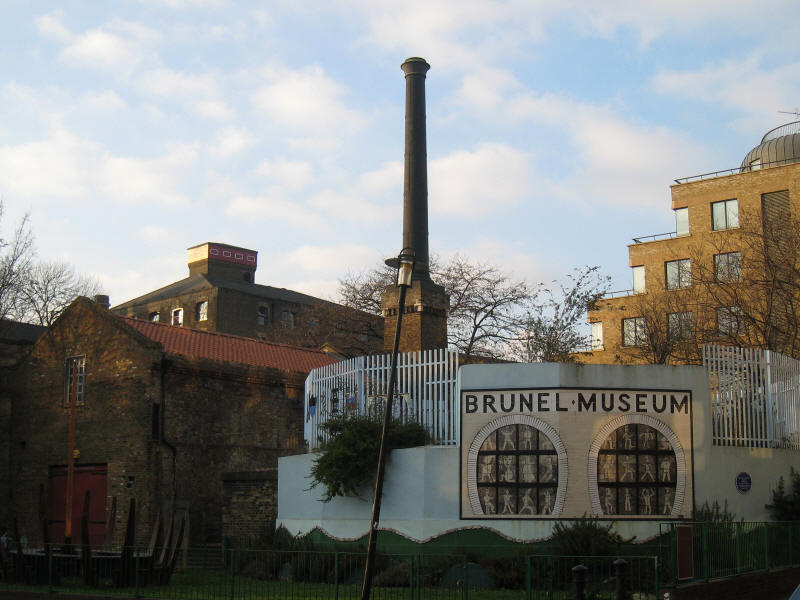
The building on the left with the chimney houses the diminutive Brunel Museum in
Rotherhithe in south-east London. The white railing-topped construction is the
top of the southern shaft of the Thames Tunnel. The mural shows part of the
innovative tunnelling shield invented by Brunel, with twelve miners working at
the tunnel face at one time.
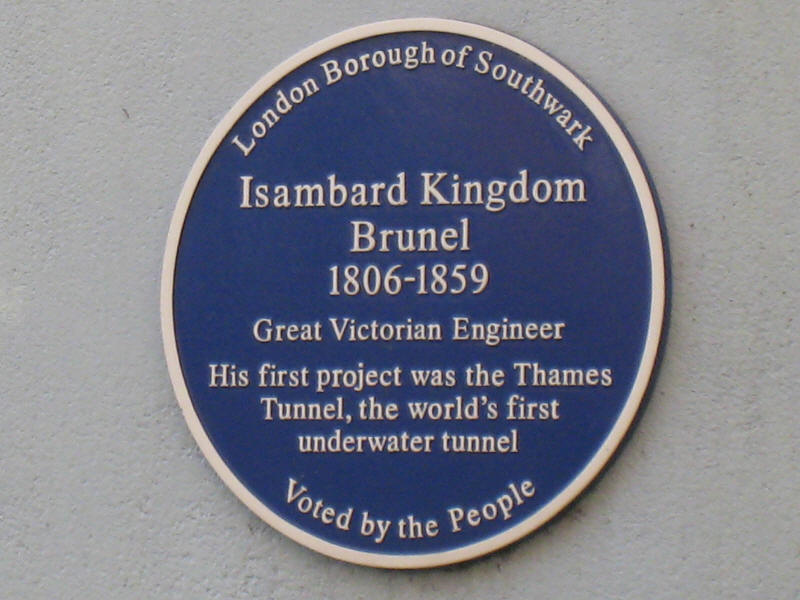
A close-up of the blue plaque
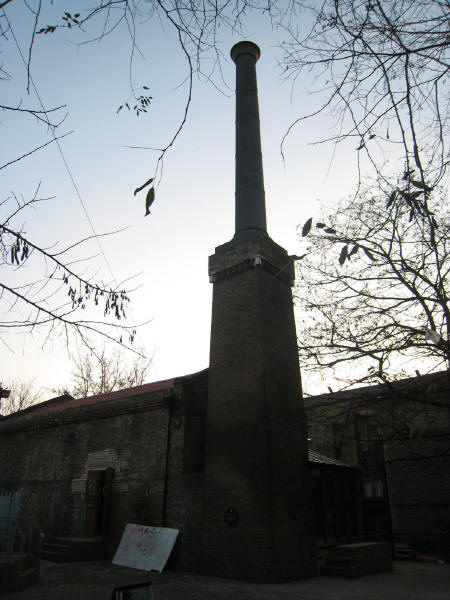
The museum from behind
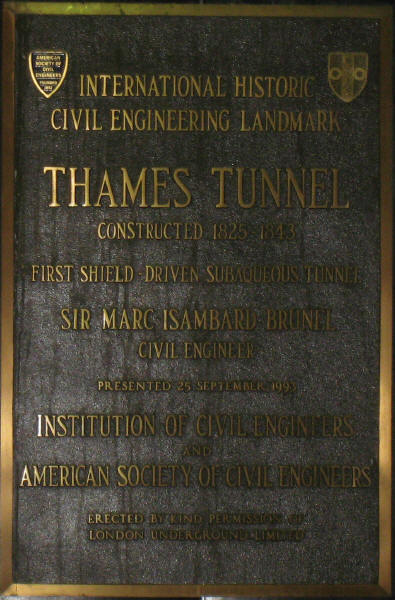
As we make our way into Rotherhithe station (at today's date part of the East
London Line, but closing next week and reopening in 2010 as part of the London
Overground network) we find an International Historic Civil Engineering Landmark
plaque, one of only 12 such landmarks in the UK - one of the others being
Brunel's Great Western Railway.
As it says, the Thames Tunnel was the world's first underwater tunnel, built
between 1825 and 1843. It is 11 metres wide, 6 metres high and 396 metres long,
running 23 metres below the river's surface at high tide. The original intention
was for the carriage of goods, but with the intended ramps at each end never
built, it was used first only by pedestrians with an underground market being a
major tourist attraction, described by American traveller William Allen Drew as
the eighth wonder of the world. It was purchased by the East London Railway
Company in 1865, and trains ran through it from 1869.
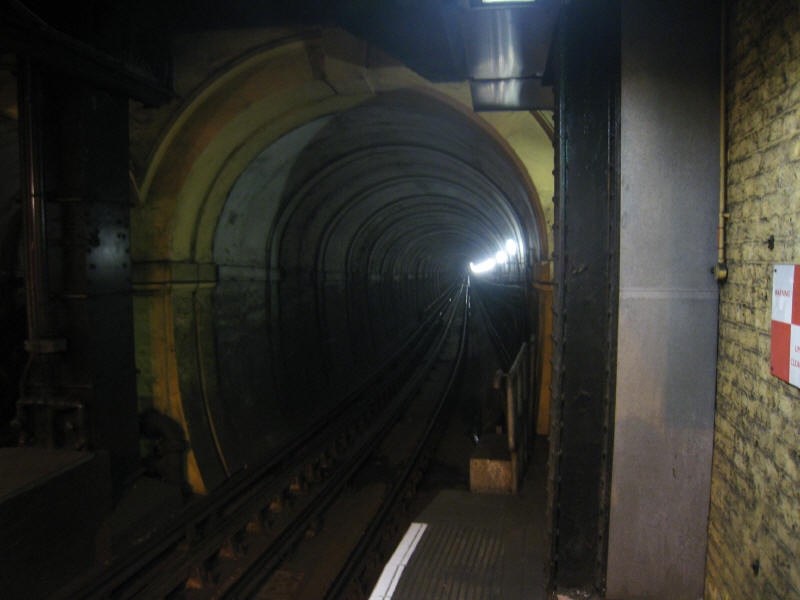
Having travelled through the floodlit tunnel on a deliberately slow-moving
train, from the northbound platform at Wapping we look back through the tunnel -
some of the 60 connecting arches between the west and east parts of the tunnel
can just be seen
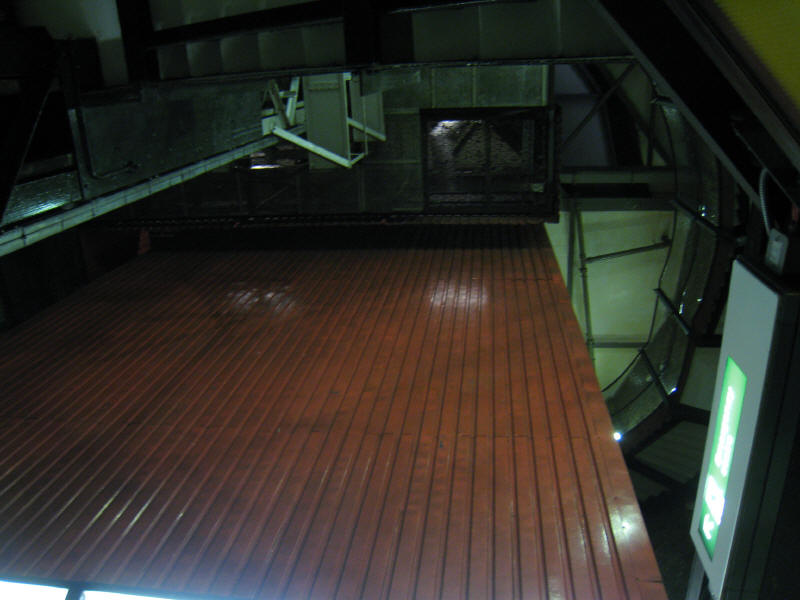
Looking up the circular shaft at Wapping
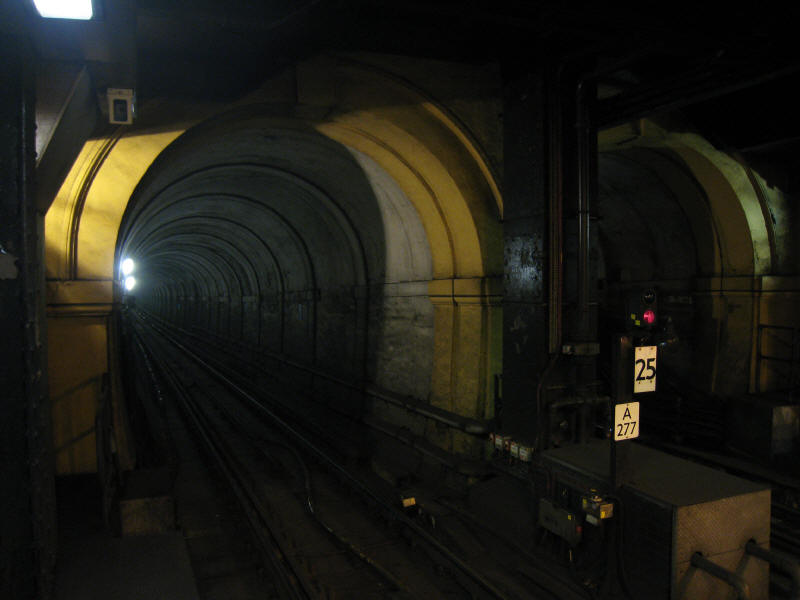
From the southbound platform, a slightly better look into the tunnel and the
connecting arches.

Back at Rotherhithe, looking down the twin tunnels.
A remarkable construction, and a last chance to look at it for two and a half
years as these guided tours won't be able to operate while the East London Line
extension works are going on, but a good result is that the Rotherhithe shaft,
currently empty, will have a base put in it at no cost to the museum, enabling
the museum to expand significantly into that newly available space.
|